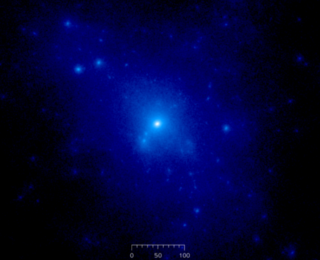
by Cole Meldorf | Mar 9, 2024 | Daily Paper Summaries, PRJ
In this Astrobite, the authors study the effects of dark matter on merging black hole binaries. As the black holes move through dark matter, they form wakes that slow them down, could this affect the gravitational waves released?

by Cole Meldorf | Jan 5, 2024 | Daily Paper Summaries
In this Astrobite, the authors search for primordial black holes, a dark matter candidate, by calculating the effect their gravity would have on objects in our Solar System!

by Emma Clarke | Dec 26, 2023 | Daily Paper Summaries
Find out what would happen if the Sun or other stars hid primordial black holes in their centers.

by Guest | Dec 16, 2023 | Undergraduate Research
As part of our Undergraduate Research series, Neev Shah explores how alternative dark matter models describe the evolution of galaxies.

by Luna Zagorac | Oct 25, 2023 | Daily Paper Summaries, PRJ
If every pulsar had more motion
Across the galactic plane
Then they’d all be surfin’
On fuzzy dark matter, yeah

by William Lamb | Sep 19, 2023 | Daily Paper Summaries
The upcoming LISA mission promises to detect many gravitational wave events, but can it attribute any of them to a host galaxy? Let’s find out!






